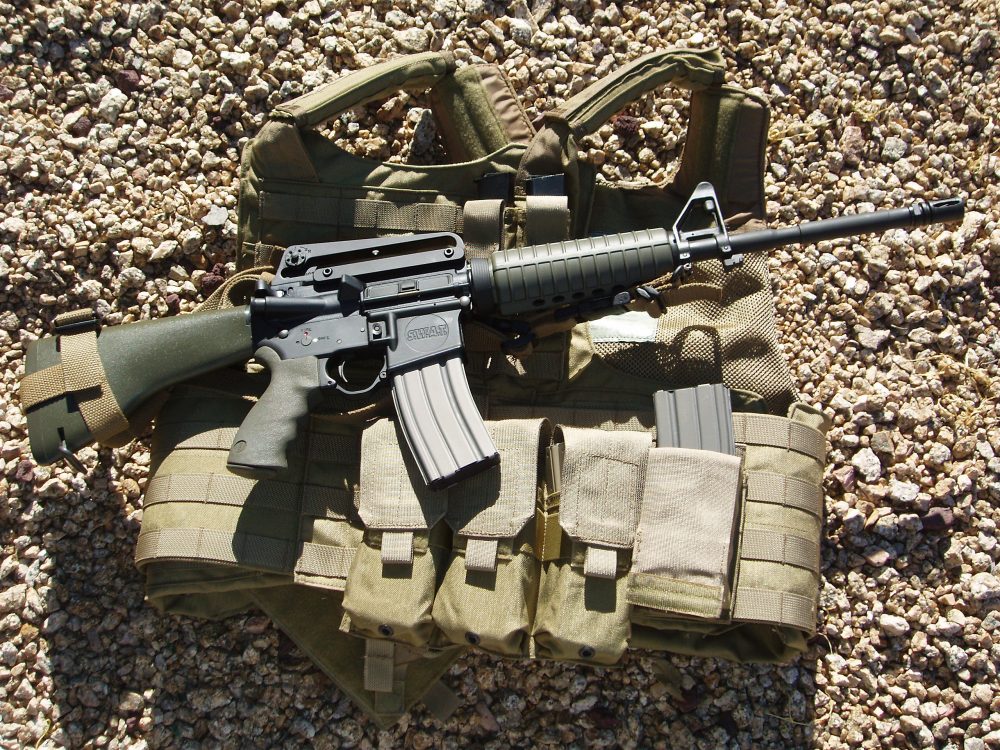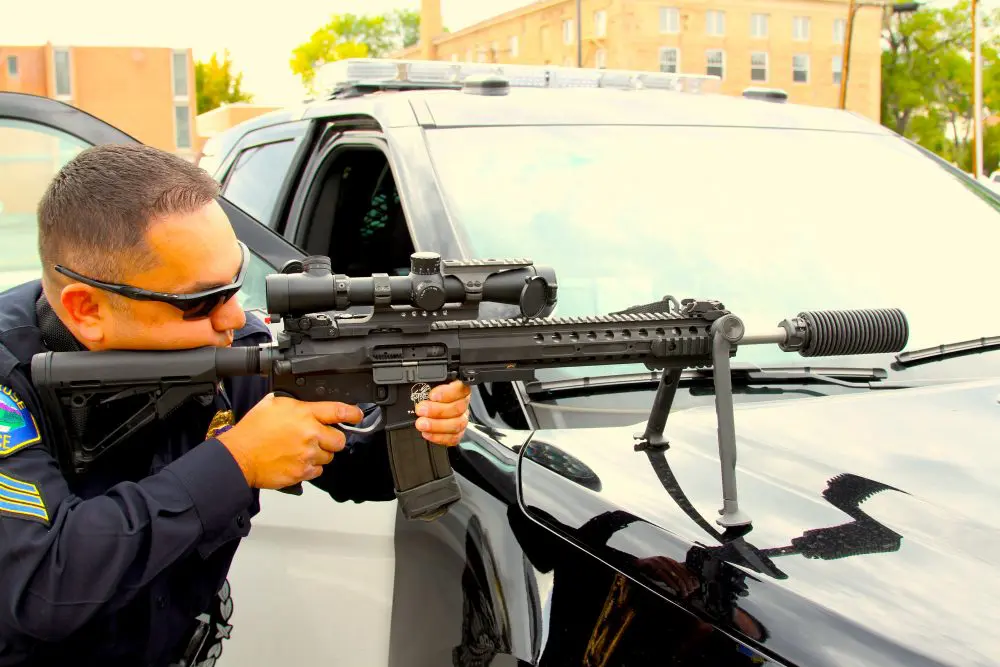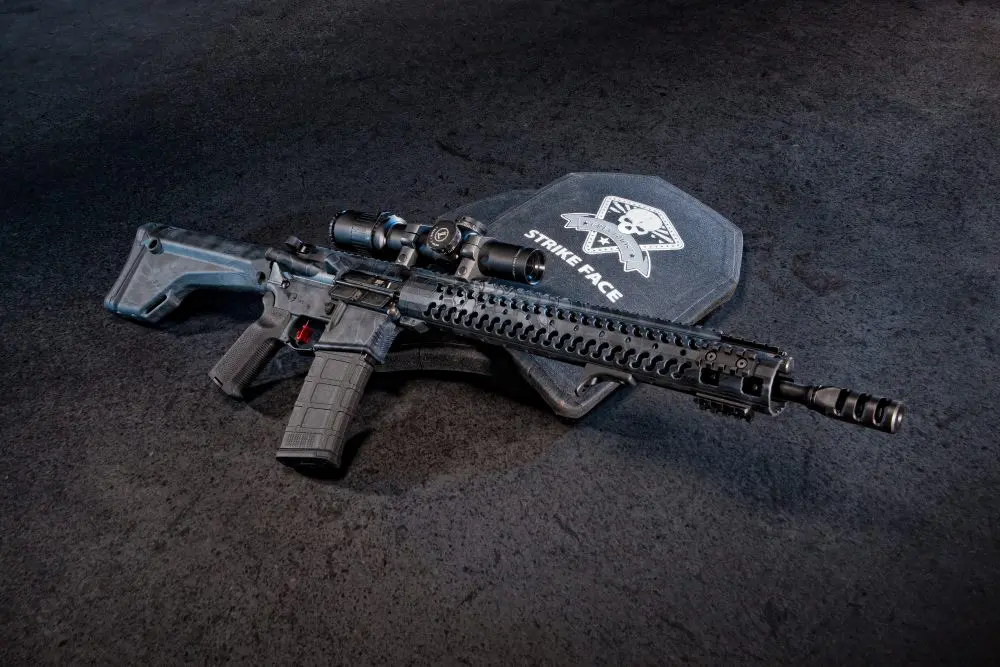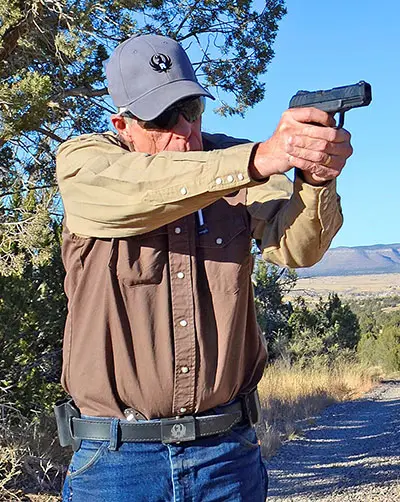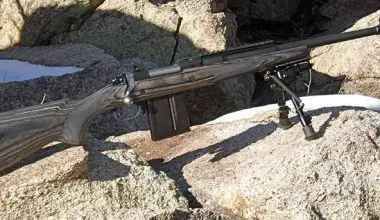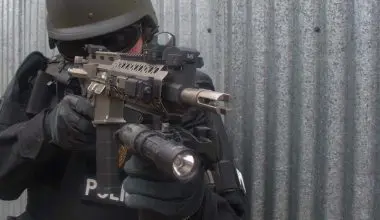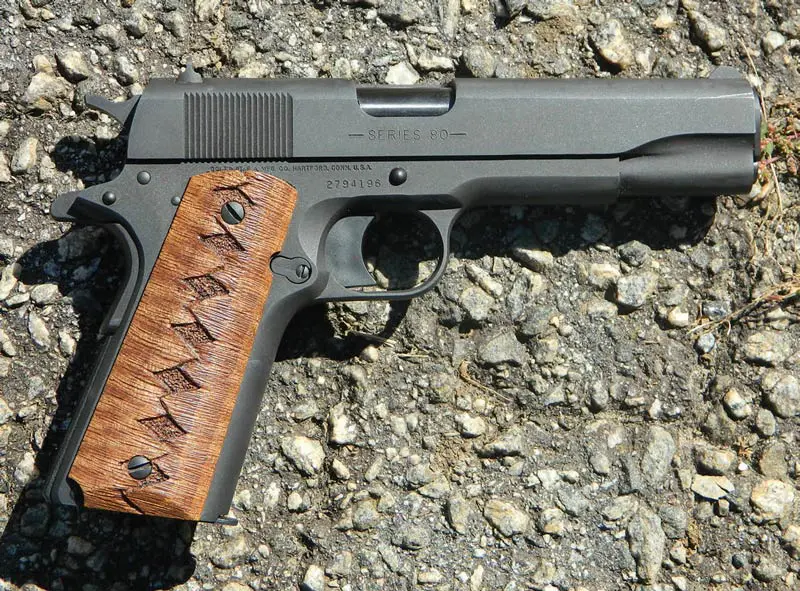
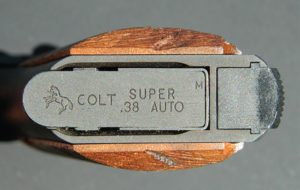
THE .38 Super cartridge and the 1911 handgun are among the most effective combinations available for all-around service use and personal defense, yet it is underutilized to say the least.
The pistol saw extensive use in the hands of the FBI and figured into the demise of dangerous Depression-era fugitives such as Baby Face Nelson. The caliber also saw service with the other side of the law. If you look closely at images of John Dillinger’s highly modified 1911 with foregrip, converted to fully automatic fire, the extended magazine is obviously a .38 Super.
But this review isn’t about history. It’s about the performance of a worthwhile cartridge that has seen action and earned an excellent reputation. The .38 Automatic Colt Pistol (ACP) cartridge was introduced in 1900 along with the Colt 1900 pistol, predating both the 9mm Luger and the .45 ACP.
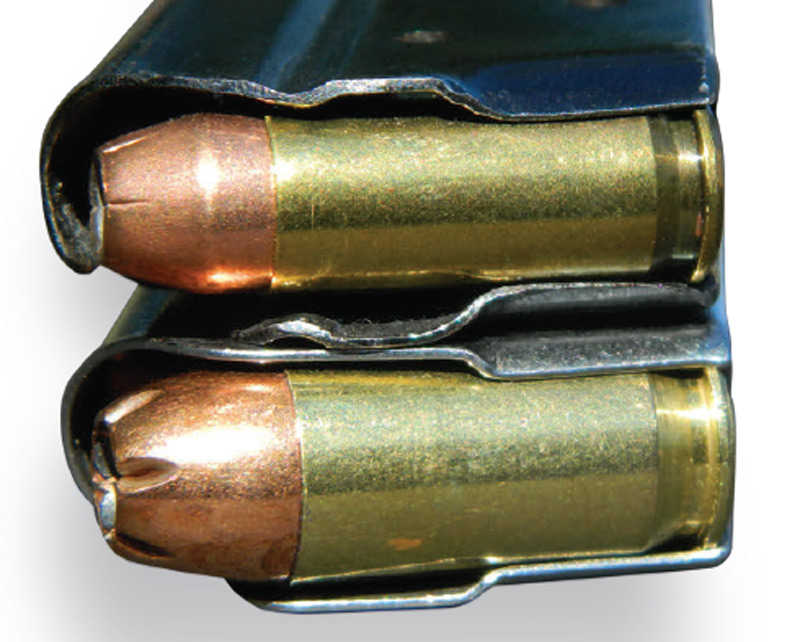
Table of Contents
ORIGINAL .38 ACP LOADING
As originally loaded, the .38 ACP is more or less as powerful as the 9mm Luger, 9mm Steyr, 9mm Largo, and the like. The difference we are interested in is that the .38 ACP features a .900-inch long cartridge case. When the U.S. Army wanted a .45 ACP pistol, John Moses Browning designed the 1911 around a .900-inch long cartridge case and modified his original handgun design. This paved the way for the later introduction of a .38 ACP 1911.
The original 130-grain .38 ACP loading produced about 1,050 feet-per-second (fps). In 1929 Colt introduced the 1911 in .38 ACP and the new loading was advertised at 1,300 fps, although a realistic velocity was 1,260 fps. At the same time, the original .38 ACP Colt was finally discontinued.
The reasons for the introduction of the .38 Super are not always fully understood. Colt marketed the .38 Super successfully as a peace officer’s handgun. The jacketed 130-grain bullet had more penetration than common handgun calibers and proved effective against the new class of mechanized criminal. The .45 ACP and .38 Special loads were not as effective against vehicles and cover as the .38 Super.
Colt also wished to keep a medium-bore pistol in production for those who favored the lighter recoiling .38 over the .45. Finally the .45 ACP (and 9mm) could not be sold in most South American nations because it was prohibited as a military cartridge. That made three good reasons Colt had for introducing the .38-caliber 1911.
BIRTH OF THE .38 SUPER
The engineering was not difficult, since the .45 ACP pistol already used a .900-inch long cartridge. The slide was redesigned to a smaller breechface and the barrel properly chambered. The magazine features the same exterior dimensions as the .45 ACP, though a slot runs the length of the magazine to pinch the magazine to the appropriate dimensions.
The .38 Super was a commercial success for several years. There are a number of reasons for its loss of popularity, but it seems that competition from the .357 Magnum cartridge was the main reason the .38 Super fell out of favor.
We were a nation of revolver shooters, and the .357 Magnum gave lawmen a cartridge of greater power. The Smith & Wesson revolver was more accurate than the Colt 1911. While the 1911 had greater firepower and a better sustained rate of fire, the big Smith & Wesson revolver proved accurate well past 100 yards.
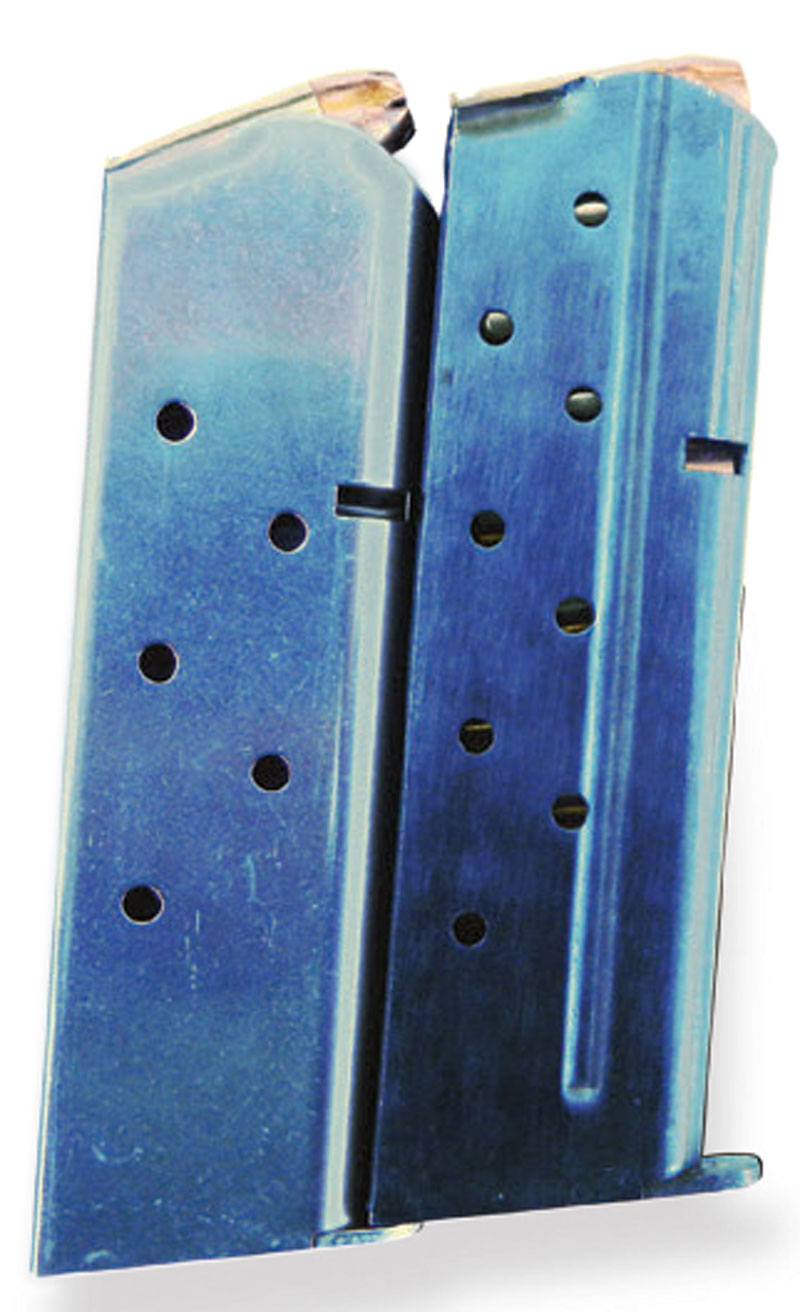
BAD RAP
On the subject of accuracy, we need to address a consideration that dogged the Super for much of its service life. The pistol gained a reputation for inaccuracy that is probably not deserved. Standards for the GI 1911 .45 were generous— on the order of a five-inch group at 25 yards. (Most .45s were more accurate, with military testing prior to World War I showing pistols capable of 2.4- inch groups.)
The Super was less accurate by reliable reports. The problem seemed to be in inconsistent headspace. Browning was finding his way with the early ACP cartridges. Both the .32 ACP and .38 ACP feature a slight semi-rim for headspace. This is less reliable than the later headspace on the case mouth design of the .45 ACP.
Modern 1911 handguns beginning about 1981 headspace properly on the case mouth. Before those days, the Bar- Sto Precision barrel turned many .38 Super pistols into tack drivers. Regardless, for combat use the Super wasn’t all that inaccurate.
With a somewhat spotted history behind it, the Super isn’t always recognized for its performance today. One aspect of the performance of the 1911/.38 Super combination cannot be argued and that is reliability.
I am going to avoid comparing the .38 Super to the .357 SIG or the 9mm. These cartridges are useful in 9mm size handguns. The .38 ACP must be chambered in a .45 size handgun due to the case length. This means the 1911 (or Witness or SIG P220 size).
.38 SUPER STRENGTHS
The good attributes of the 1911 bear mention. The pistol features a straightto- the-rear trigger compression, low bore axis, grip that fits most hands well, and excellent speed into action. There is no pistol faster to an accurate first shot than a 1911 handgun. When chambered in .38 Super, the pistol is even faster to accurate repeat shots. This has been borne out in competition.
Given the efficiency of the .45 ACP cartridge for personal defense, there must be a compelling reason to adopt the .38 Super. After all, the big-bore .45 ACP is proven and effective, right? The Super has advantages in penetration and control. For those who find .45 ACP recoil daunting, the .38 Super is a much easier cartridge to master. While some may not feel the .45 ACP has excess recoil, an individual firing thousands of rounds yearly in practice may disagree.
The .38 Super has two more rounds of magazine capacity. The cartridge has the same penetration and high velocity advantages of the .357 SIG in a platform that allows good control. Long-range practical shooting is possible with the 1911/.38 Super format. The .38 Super is not a “little” better than the 9mm. It is a much more powerful cartridge, particularly with heavier bullets.
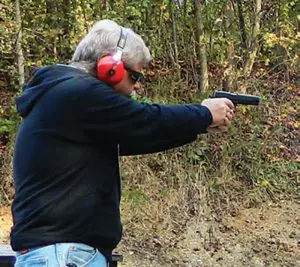
SUPER AMMO
The .38 Super cartridge seems to invite misunderstanding and even the name invites confusion. Many cartridge boxes are now marked .38 ACP +P or .38 Auto +P. The .38 ACP in its various loads generates pressure of 26,500 to 36,500 psi. That is a wide spread, but most Colt 1911 pistols will function with all these loads.
The problem came 40 years ago when SAAMI began standardizing the +P designation. Practically every modern .38 Super load was a +P. However, there are a number of modest loads that are great practice loads and quite accurate. This includes the Fiocchi 129-grain loading at 1,150 fps. The Winchester USA 130-grain FMJ loading breaks at about 1,150 fps. These would be safe to fire in a good tight 1900 Colt.
By the same token, it isn’t a challenge to load a 115-grain JHP to 1,300 fps in the .38 Super. That is simply 9mm +P+ territory. Remember, the .38 Super designation was more of a name for the pistol than the cartridge, and much .38 Super ammunition just hasn’t been that strong. This has changed, and today we have ammunition that matches the potential of the cartridge.
This ammunition will often surprise the user with modest recoil. The .38 Super uses relatively fast-burning powder that produces less recoil energy than the slow-burning powder used in the .357 Magnum, for example. The recoil spring captures much of the recoil energy as well. The 1911 platform was originally designed for the .45 ACP and easily handles the .38 Super, while the 10mm is often hard on the 1911.
If there is a drawback to the .38 Super, it is that ammunition for the caliber is not widely available. A well-stocked shop will have .38 ACP Super on hand but the selection may be limited. Within the past year, Buffalo Bore Ammunition and Wilson Combat have introduced .38 Super ammunition. In each case, the ammo is loaded to the potential of the cartridge. For many years, CorBon Ammunition has offered a wide assortment of effective ammo in this caliber. They’ve been the only show for the Super fan for some time.
Winchester offers the Silvertip loading and, while it isn’t loaded to the full potential of the cartridge, it is very controllable and among the most pleasant of Super loads. For those who cannot comfortably fire the .45, .40 or a lightweight 9mm, the .38 Super/Silvertip combination is a good one.
The .38 Super offers first-class performance in a service loading such as the CorBon 125-grain DPX. If you wish a rapidly expanding or fragmenting load for use in an urban situation, the 115-grain JHP offers that option. If you wish to carry a spare magazine filled with a load that offers greater penetration potential, the Buffalo Bore 124-grain FMJ load is impressive.
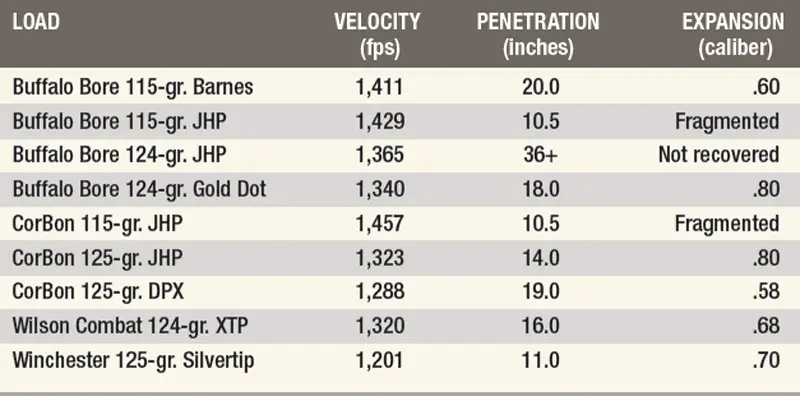
FIRE AWAY
The accompanying table shows the performance of select loads in water jugs. Water is handy and inexpensive to use in testing ammo. It isn’t gelatin but gelatin isn’t tissue, bone and blood either. The results rendered by testing with one-gallon water jugs will be within 10% of the results in gelatin as far as penetration and expansion.
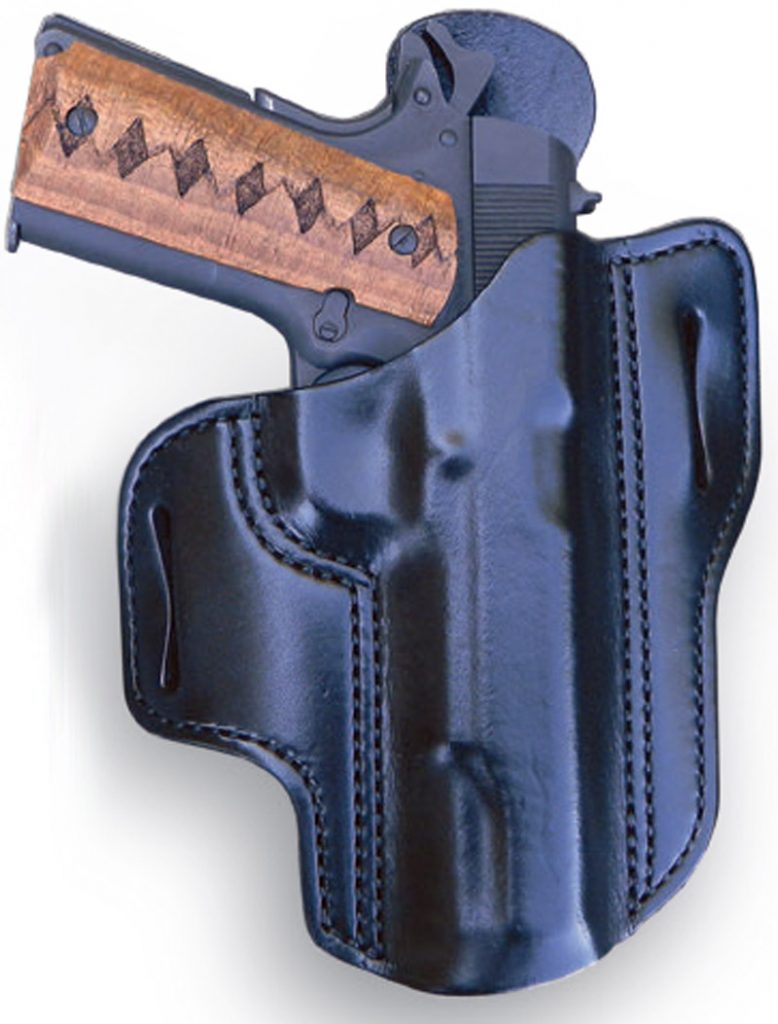
During the course of this review, we fired the Government Model 1911 .38 Super against a similar .45 ACP pistol. While not timed, we fired as rapidly as we could regain the sights in recoil against an Innovative Targets steel target. You cannot ask for a better training aid—hit it and the target responds, but with a miss or off-center hit, you have no effect. That is reality.
The impression was that we were able to deliver ten hits with the Super in the time it took to deliver eight with the .45. Less trained shooters were handling the .38 Super more quickly in comparison to the .45.
The Colt 1991A1 may not have the bells and whistles some handguns do, but the pistol always works and gives excellent service-grade accuracy. The stainless steel version in .38 Super is the most accurate Colt .38 Super the author has used.
The only modification made to the 1991A1 was adding Katana grips from Lance Larson. I also added Wilson Combat magazines to the modest supply of Colt magazines, and I used a Triple K extended magazine with 15-round capacity with good function. While not suitable for holster carry, there may be situations where the Triple K magazine would be useful.
PACKING THE .38 SUPER
I have developed strong preferences in holsters over the years. They must be leather for most uses, and the fit must be good. A quality holster should demand a modest break-in period.
My Colt 1991A1 .38 Super is currently deployed in a Jason Winnie pancake holster. The J111 as ordered features a sweat guard that protects the body from the handgun and facilitates a sharp draw. The J111 is comfortable, keeps the pistol properly positioned to be drawn into the target, and has good retention. Jason Winnie is a skilled holster maker in his own right, but he gets it honestly from his grandfather, Don Hume.
The .38 Super/Colt combination fits my needs well. There are fancier guns, more accurate pistols, and more powerful handguns, but none more reliable and faster into action. Modern loads put the .38 Super just where it needs to be—a high-velocity loading with good performance, excellent penetration, and governable recoil.
